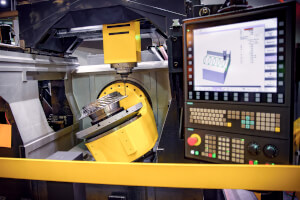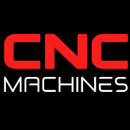Comprehensive Guide to G Code and M Codes for CNC Machines

Comprehensive Guide to G Code and M Codes for CNC Machines
CNC (Computer Numerical Control) machines operate based on coded instructions that dictate their movements and operations. These instructions are written in G-code and M-code, which are essential for machining processes. This guide provides an in-depth understanding of G-code and M-codes, their functionalities, examples, and a case study to illustrate their application in real-world scenarios.
What is G-code?
G-code is the language used to control CNC machines. It stands for 'Geometric Code' and consists of a series of commands that tell the machine what actions to perform, such as moving to a specific point, cutting at a particular speed, or performing a specific operation.
Basic Structure of G-code
- Letter Prefixes: Each G-code command starts with a letter, usually 'G,' followed by a number (e.g., G00, G01).
- Parameters: G-code commands can include various parameters, such as coordinates (X, Y, Z), feed rate (F), and spindle speed (S).
Common G-code Commands
- G00: Rapid positioning
Function: Moves the machine to a specified location at the maximum speed.
Example:G00 X10 Y20 - G01: Linear interpolation
Function: Moves the machine to a specified location at a controlled speed.
Example:G01 X10 Y20 F100 - G02: Circular interpolation clockwise
Function: Moves the machine in a clockwise arc to a specified location.
Example:G02 X10 Y20 I5 J5 - G03: Circular interpolation counterclockwise
Function: Moves the machine in a counterclockwise arc to a specified location.
Example:G03 X10 Y20 I5 J5 - G17: Select XY plane
Function: Specifies the XY plane for circular interpolation.
Example:G17 - G20/G21: Units selection
Function: G20 sets units to inches, and G21 sets units to millimeters.
Example:G21 - G28: Return to home position
Function: Moves the machine to its home position.
Example:G28 X0 Y0 - G40: Cutter radius compensation off
Function: Cancels cutter radius compensation.
Example:G40 - G41/G42: Cutter radius compensation left/right
Function: Applies cutter radius compensation to the left (G41) or right (G42) of the path.
Example:G41 D1 - G90/G91: Absolute/incremental positioning
Function: G90 sets absolute positioning, and G91 sets incremental positioning.
Example:G90
What is M-code?
M-code (Miscellaneous Code) controls the auxiliary functions of the CNC machine, such as turning the spindle on or off, controlling coolant, or changing tools.
Common M-code Commands
- M00: Program stop
Function: Stops the program until the operator resumes it.
Example:M00 - M01: Optional stop
Function: Stops the program if the optional stop switch is on.
Example:M01 - M03: Spindle on clockwise
Function: Starts the spindle rotating clockwise.
Example:M03 S500(starts spindle at 500 RPM) - M04: Spindle on counterclockwise
Function: Starts the spindle rotating counterclockwise.
Example:M04 S500(starts spindle at 500 RPM) - M05: Spindle stop
Function: Stops the spindle.
Example:M05 - M06: Tool change
Function: Changes the tool.
Example:M06 T1(changes to tool 1) - M08: Coolant on
Function: Turns the coolant on.
Example:M08 - M09: Coolant off
Function: Turns the coolant off.
Example:M09 - M30: Program end and rewind
Function: Ends the program and rewinds to the beginning.
Example:M30
How G-code and M-code Work Together
G-code and M-code work together to control the various functions of a CNC machine. While G-code primarily handles the movement and positioning of the machine, M-code takes care of auxiliary functions. Together, they ensure that the machine operates efficiently and performs the desired operations accurately.
Examples of G-code and M-code in Action
Here’s a simple example of a CNC program that combines G-code and M-code:
%
O1001
G21 (Set units to millimeters)
G17 (Select XY plane)
G00 X0 Y0 (Move to start position)
M06 T1 (Tool change to tool 1)
M03 S1200 (Spindle on clockwise at 1200 RPM)
G01 X50 Y50 F200 (Linear move to X50 Y50 at feed rate 200)
G02 X100 Y100 I25 J25 (Clockwise arc to X100 Y100 with center at I25 J25)
M08 (Coolant on)
G01 X150 Y50 (Linear move to X150 Y50)
M09 (Coolant off)
M05 (Spindle stop)
G00 X0 Y0 (Return to home position)
M30 (End of program)
%Case Study: Optimizing CNC Machining with G-code and M-code
Background
A manufacturing company needs to optimize its CNC machining process for producing a complex part. The goal is to reduce cycle time and improve precision.
Solution
- Initial Analysis: The company analyzes the current G-code and M-code to identify inefficiencies.
- Optimization:
- Toolpath Optimization: Modifies G-code to optimize toolpaths, reducing unnecessary movements.
- Feed Rate Adjustment: Adjusts feed rates (F) for different sections to balance speed and accuracy.
- Coolant Control: Implements M08 and M09 commands strategically to use coolant only when necessary, saving resources.
- Implementation:
- Updates the CNC program with the optimized G-code and M-code.
- Conducts trial runs to validate the improvements.
Results
- Cycle Time Reduction: The optimized program reduces cycle time by 15%.
- Improved Precision: Enhanced control over tool movements and speeds results in better precision and surface finish.
- Resource Efficiency: Optimized coolant usage reduces waste and operational costs.
How AI is Enhancing G-code and M-code
Artificial Intelligence (AI) is revolutionizing the way CNC machines operate through advanced G-code and M-code optimization. Here’s how AI is being integrated:
- Automated Code Generation: AI can generate optimized G-code and M-code automatically based on 3D models, reducing programming time and human error.
- Predictive Maintenance: AI algorithms can analyze machine operations in real-time to predict when maintenance is needed, reducing downtime.
- Adaptive Feed Rates: AI can adjust feed rates dynamically during machining to optimize for speed and accuracy.
- Error Detection: AI systems can identify anomalies in G-code and M-code to prevent costly mistakes and ensure high-quality output.
G-code and M-code are fundamental to the operation of CNC machines, providing detailed instructions for machine movements and auxiliary functions. Understanding and optimizing these codes can significantly enhance machining efficiency, precision, and overall productivity. With the advent of AI, the future of CNC programming looks even more promising, paving the way for smarter, more efficient manufacturing processes.


